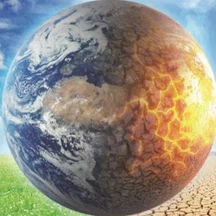Question & Answer
Question & Answer
Q: What are the consequences of global warming and climate change?
The Answer
Last update 2022.06.06
<p style=";text-align:left;direction:ltr">It is difficult to accurately predict the consequences of increased global warming, but here are some potential effects:</p><ol style=";text-align:left;direction:ltr"><li style=";text-align:left;direction:ltr"> <strong>Rising temperatures: The</strong> Earth will get warmer on average, and although some areas on Earth may welcome higher temperatures, there are areas that become uninhabitable.</li><li style=";text-align:left;direction:ltr"> <strong>Rain in some areas, drought in others:</strong> Warmer conditions are likely to lead to more evaporation and precipitation in general, but there will be variation between regions, with some getting wetter and others drier.</li><li style=";text-align:left;direction:ltr"> <strong>Rising sea levels:</strong> A stronger greenhouse effect will cause the ocean to warm and partially melt glaciers and ice sheets, causing sea level to rise. Ocean water will also expand if its temperature rises, contributing to an increase in sea level.</li><li style=";text-align:left;direction:ltr"> <strong>Climate extremes,</strong> such as droughts, floods and record temperatures, lead to crop losses and threaten the livelihoods of agricultural producers and the food security of communities around the world.</li><li style=";text-align:left;direction:ltr"> <strong>Damage to agricultural crops and food security:</strong> Rising levels of carbon dioxide in the atmosphere can have positive as well as negative effects on agricultural crops. Some laboratory experiments suggest that high levels of carbon dioxide can increase plant growth. However, other factors, such as temperature changes, ozone, and restrictions on water and nutrients, may offset any potential yield increase. Although high carbon dioxide can stimulate plant growth, research has shown that it can also reduce the nutritional value of most food crops by reducing concentrations of protein and essential minerals in most types of plants.</li><li style=";text-align:left;direction:ltr"> <strong>Increase in agricultural pests and weeds:</strong> Depending on the crop and ecosystem, weeds, pests and fungi can thrive, with warmer temperatures, humid climates and increased carbon dioxide levels, and climate change is likely to increase weeds and pests.</li><li style=";text-align:left;direction:ltr"> <strong>Disease spread:</strong> Climate change can cause new patterns of pests and diseases, affecting plants, animals and humans, and pose new risks to food security, food safety and human health.</li></ol>

Move to the next question: ما الفرق بين الطقس والمناخ؟
Know more
What is the winter solstice?
Why is the December full moon called the `Cold Moon`?
What is the Siberian High?
Arabia Weather App
Download the app to receive weather notifications and more..
